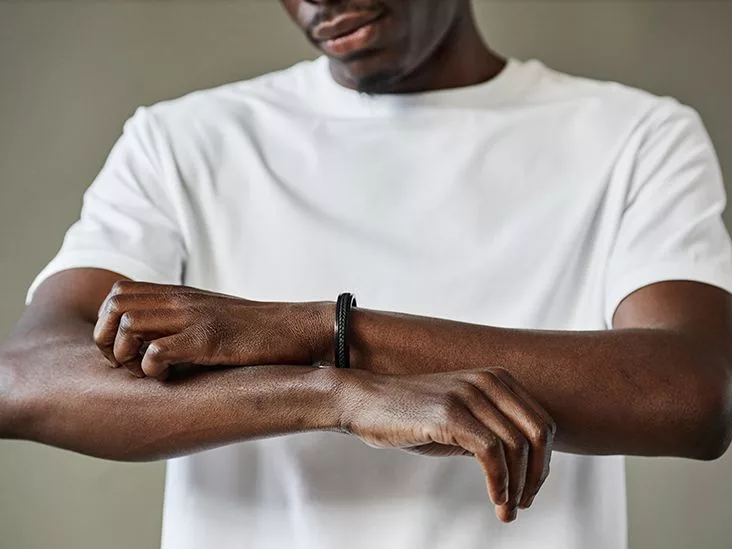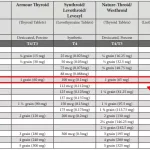Imagine you’re getting ready for a jog, you splash some water on your forearms, and—boom—tiny, itchy welts pop up like a surprise party you didn’t RSVP to. That’s the kind of “aha!” moment many people have when they first encounter physical urticaria. The good news? Once you know the warning signs, the triggers, and the ways to calm things down, you can stay one step ahead of those unexpected hives. Let’s dive in together and untangle everything you need to know about physical urticaria symptoms.
What is physical urticaria
Physical urticaria, also called chronic inducible urticaria (CIndU), is a special club of hives that only show up after a specific stimulus—think cold wind, a hot shower, pressure from tight clothes, sunlight, or even a sip of spicy soup. Unlike spontaneous hives that can appear out of the blue, physical urticaria needs a “push” to get going. The push makes mast cells in the skin release histamine and other chemicals, which in turn create the classic wheal‑and‑flare reaction.
According to the Primary Care Dermatology Society, the condition is distinct enough that doctors treat it as its own subgroup, even though many patients also have spontaneous urticaria at the same time.
Core symptoms explained
Itchy wheals (hives)
The headline act of physical urticaria is the itchy wheal—those raised, reddened spots you notice on your skin. They can be as tiny as a pinhead or spread out to cover a few centimeters. Most of them last between 1 and 24 hours, then fade without a trace (unless you scratch them too hard, which can leave a bruise).
Localized swelling (angio‑edema)
Some folks also get deeper swelling, especially around the lips, eyelids, or hands. This swelling, known as angio‑edema, can linger for up to 72 hours and may feel more painful than itchy. It’s a sign that the reaction has gone a little deeper into the skin’s sub‑cutaneous layer.
Flushing and redness
When heat‑related triggers like exercise or a hot shower are the culprits, you might notice a general flush across your chest or face. The blood vessels dilate, turning the skin a rosy hue before the actual wheals appear.
Pain or burning sensation
Pressure‑induced urticaria (think tight belts or long periods of sitting) can feel more like a dull ache or a burning sensation rather than pure itch. That’s because the pressure stimulates deeper nerve endings in the skin.
Secondary signs
Scratching can lead to tiny bruises or discoloration. In rare cases, a delayed‑pressure reaction can cause hives to re‑appear hours after the initial pressure stimulus, which can be confusing if you’re not expecting it.
Triggers that shape signs
The type of trigger you’re exposed to often predicts how the symptoms will look. Below is a quick guide that matches the most common triggers with their typical skin response.
| Trigger | Typical latency | Wheal size | Duration |
|---|---|---|---|
| Cold (ice, winter air) | Seconds‑minutes | 2‑10 mm | 30 min‑2 h |
| Heat / exercise (cholinergic) | Minutes‑hours | 1‑4 mm papules | ≈1 h |
| Pressure (tight clothing, prolonged sitting) | Immediate‑hours | Linear wheals | 12‑72 h (delayed‑pressure) |
| Sunlight (solar) | Minutes | Variable, often large | 1‑3 h |
| Water (aquagenic) | Minutes | Small, uniform wheals | 30 min‑2 h |
Notice how the “cold” and “solar” triggers act fast, while pressure‑related hives sometimes take a few hours to surface. Understanding that timing can spare you a lot of mystery and panic.
How doctors diagnose
History and trigger diary
First things first: your doctor will ask you to keep a simple diary for a week or two. Write down when a rash appears, what you were doing, what you ate, what the weather was like, and how long the spots lasted. That personal notebook is gold for pinpointing the trigger.
Provocation tests
Once you’ve gathered clues, the clinician may perform a series of controlled tests:
- Ice cube test – a small piece of ice is placed on the forearm for 5 minutes; a wheal within 10 minutes suggests cold urticaria.
- Pressure test – a blood pressure cuff inflated to 80 mmHg for a few minutes can provoke delayed‑pressure urticaria.
- Exercise test – you might be asked to jog on a treadmill while being observed for cholinergic hives.
- Solar test – a small area of skin is exposed to a calibrated light source.
These tests are safe, quick, and give the doctor a direct look at how your skin reacts to each stimulus.
When labs are needed
In most cases, blood work isn’t required. However, if your doctor suspects an underlying autoimmune condition or wants to rule out other causes of swelling, they might order a complete blood count, thyroid panel, or a test for specific IgE antibodies.
Managing the symptoms
Avoidance and smart lifestyle tweaks
The easiest way to keep hives at bay is to dodge the trigger whenever possible. Here are a few friendly suggestions:
- Carry a small towel and wear loose, breathable clothing if you’re prone to pressure hives.
- If cold is your enemy, keep gloves and scarves handy, and consider a “cold‑desensitization” program under a physician’s guidance.
- For solar urticaria, apply a broad‑spectrum sunscreen (SPF 30 or higher) and wear a wide‑brimmed hat.
- Aquagenic sufferers can try lukewarm showers and moisturize right after getting out of the water.
- Stay hydrated and keep a cool environment; overheating can amplify cholinergic hives.
First‑line medication: antihistamines
Non‑sedating antihistamines such as cetirizine, loratadine, or fexofenadine are usually the first line of defense. Many dermatologists start with the standard dose and, if needed, increase it up to four times the usual amount—always under medical supervision.
Second‑line options for stubborn cases
If antihistamines don’t bring relief, doctors may add:
- H2‑blockers (e.g., ranitidine) to complement H1 blockers.
- Leukotriene receptor antagonists like montelukast.
- Biologic therapy – omalizumab has shown impressive results for many chronic inducible types.
- Immunosuppressants such as cyclosporine for the most refractory cases.
When to seek emergency care
Although most physical urticaria episodes are harmless, a sudden, widespread swelling of the throat, difficulty breathing, or a feeling of “tightness” in the chest signals anaphylaxis. Call emergency services right away—this can happen especially with cold urticaria that’s triggered by swimming in icy water.
Real‑world experiences
Case 1 – Dermographism in a college student
Emma, a 19‑year‑old art major, noticed that whenever she doodled on her forearm with a pen, a bright red line appeared minutes later. At first she thought it was an allergic reaction to the ink, but after a quick visit to her GP and an “ink‑on‑skin” provocation test, she learned she had dermographism, a type of physical urticaria. By swapping to looser shirts and using a gentle, fragrance‑free moisturizer, Emma now treats occasional flare‑ups with a daily antihistamine and rarely worries about a spontaneous rash.
Case 2 – Cold‑induced urticaria in a marathon runner
Mark, a 32‑year‑old marathon enthusiast, started getting hives on his cheeks and hands after training in the early morning fog. He blamed the cold air at first, but the rash persisted even after he started wearing a thermal mask. A simple ice‑cube test confirmed cold urticaria. His doctor prescribed a low‑dose antihistamine and a gradual “cold‑desensitization” program that involved short, controlled exposures to cool water. Six months later, Mark can finish his 10‑km runs in winter without a single wheal—though he still carries an epi‑pen for peace of mind.
What we learn
Both stories show that once you recognize the pattern, you can work with a clinician to pinpoint the trigger, choose the right treatment, and reclaim normal daily activities. It also reminds us that physical urticaria isn’t an “embarrassing secret”—it’s a medical condition that deserves the same care and respect as any other health issue.
Bottom line balance
Physical urticaria symptoms can feel intrusive, but they also give you a clear clue about what your body is reacting to. By learning the hallmark signs—itchy wheals, occasional swelling, and trigger‑specific patterns—you empower yourself to avoid unnecessary flare‑ups and seek appropriate treatment.
Balancing benefit and risk is key: antihistamines are safe for most, but they’re only half the story without good trigger management. Over‑reliance on medication without lifestyle tweaks can mask the underlying cause and delay proper diagnosis. Conversely, ignoring medication when symptoms are severe can lead to unnecessary discomfort or, in rare cases, anaphylaxis.
So, keep a simple trigger diary, talk openly with your healthcare provider, and experiment with gentle avoidance strategies. Most importantly, remember you’re not alone—many people navigate this terrain every day, and the right combination of knowledge and care can keep those unexpected hives from crashing your plans.
Take the next step
If you’ve recognized any of the symptoms described above, or if you’ve already been diagnosed with physical urticaria, why not start a “trigger log” tonight? Write down what you ate, the temperature of your shower, and any new clothing you tried on. Within a week, you’ll likely spot a pattern you can discuss with your doctor.
Got a story of your own, or a question about a particular trigger? Share it in the comments below—your experience might help someone else spot their own pattern sooner. And if you need a printable version of the trigger table, feel free to copy it and keep it on your fridge. Together, we can turn those surprise hives into a manageable part of life.


















Leave a Reply
You must be logged in to post a comment.